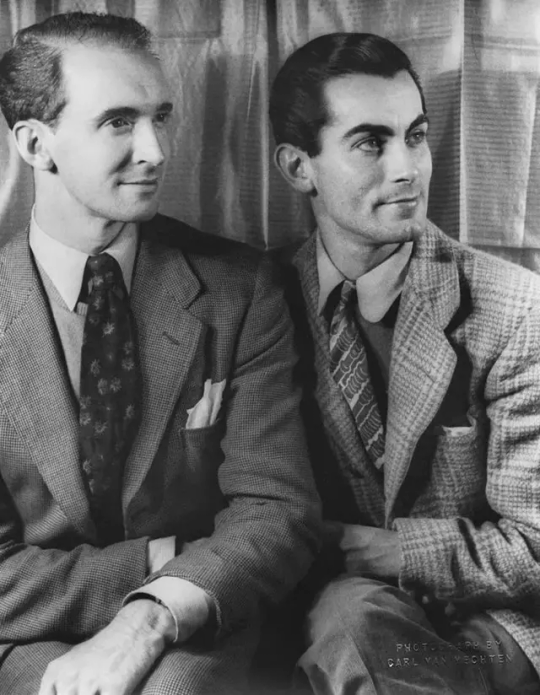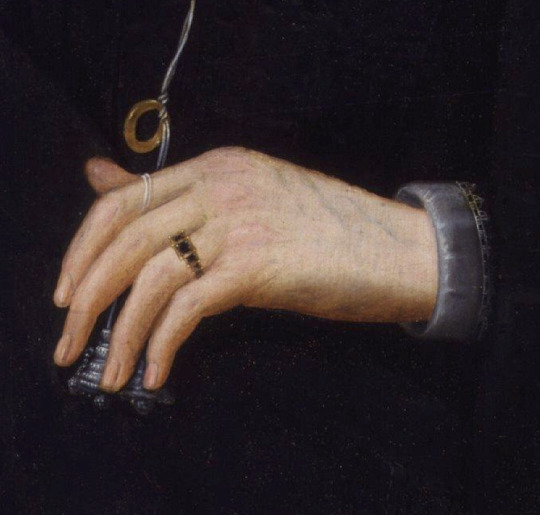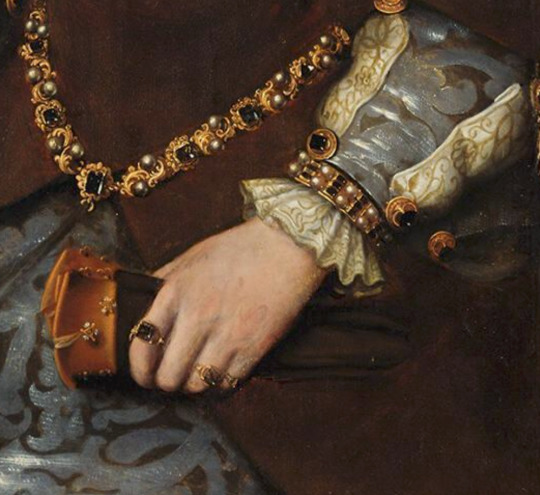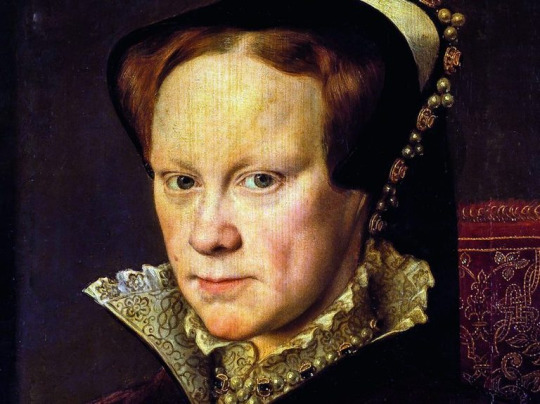#antony tudor
Text

Antony Tudor and Hugh Laing (1940) photographed by Carl Van Vechten
Antony Tudor was a British ballet choreographer, dancer and teacher and is considered to be, along with George Balanchine, one of the principle transformers of ballet into a modern art. Hugh Laing is considered to be one of the most significant dramatic ballet dancers of the 20th century.
The pair began their artistic and personal collaboration in the mid-1930's and remained partners until Tudors death in 1987. There was a interruption to their relationship in 1947 when Laing married ballet dancer Diana Adams. They were divorced in 1953.
217 notes
·
View notes
Text

Antony Tudor (deceased)
Gender: Male
Sexuality: Gay
DOB: 4 April 1908
RIP: 19 April 1987
Ethnicity: White - English
Occupation: Ballet choreographer, teacher, dancer
Note: Long time partner of Hugh Laing
#Antony Tudor#lgbt#lgbtq#mlm#lgbt history#male#gay#1908#rip#historical#white#english#choreographer#teacher#dancer
35 notes
·
View notes
Photo

Edward Villella and Antony Tudor in a rehearsal for Dim Lustre, 1964 ph. Martha Swope
1 note
·
View note
Text

Mary I of England by Antonis Mor, 1554.
#classic art#painting#antonis mor#dutch artist#16th century#portrait#female portrait#indoor portrait#mary i of england#queen#tudor#fashion#chair#flowers
10 notes
·
View notes
Text
I'm a little more than half way through Dancing on My Grave. Gelsey Kirkland is inspiring in her unflagging, multidirectional criticism.
This woman hates everything. And I love that.
Balanchine? Egomaniacal boor.
Jerome Robbins? A sycophant.
American ballet? Shit.
Russian ballet? Cold shit.
Modernism? Soulless.
Romanticism? Brainless.
Stravinski? Noise pollution.
Marius Petipa? Overrated.
All of the dancers she ever looked up to? Very mean.
I love it.
2 notes
·
View notes
Text
Poll: Which History Book Should I Read Next?
In this week's poll I am looking for your help in deciding which history book I should read next. I have four intriguing options plucked from my TBR pile.
In this week’s poll I am looking for help in choosing which history book to read next year. Last week’s poll on Novel Series is now closed. Thank you for voting!
If you don’t know what is going on, please see my post introducing this effort.
Following last week’s poll and the feedback I received, I have changed the format of these polls slightly. Instead of having the poll at the bottom of this…

View On WordPress
0 notes
Photo

Gary Flannery - photo by Roy Blakey for After Dark magazine
Gary Flannery is a professional performer who toured the world as Shirley MacLaine’s partner; was a Principal Dancer on many TV Shows and Hollywood movies; and was a lead dancer on Broadway in Pippin and Dancin', and in the movie All That Jazz (Bob Fosse called Gary “The Bull” for the sheer non-stop energy). Gary has studied with teachers including Antony Tudor, Martha Graham, Jose Limon, Stanley Williams, Alexandra Danilova, Anton Dolan, Lucas Hoving, Fred Benjamin, Chuck Davis, and Jaime Rogers. He received full scholarships to the School of American Ballet and Juilliard. Gary continues to teach master classes, lectures, and seminars at universities, dance schools and colleges around the world.
#gary flannery#ballet#ballet history#dance#dancer#danseur#ballerino#bailarín#boys of ballet#ballet men#broadway dancer#musical theatre
41 notes
·
View notes
Photo

Henry VII by Antony Dufort
Part of a proposed set of five bronze sculptures of the five Tudor monarchs (2012)
#always here for the disney villain vibes actually <3#henry vii#portraits#non-contemporary#artist: antony dufort
31 notes
·
View notes
Text
I've never been happy with how little info Wikipedia has on Charles Brandon.
Here are bits from Winter King, a book about Henry VII by Thomas Penn. I don't really recommend reading unless you are a severe Tudor nerd. It's pretty dry. I hope this will help anyone who daydreams / writes fics about Charlie (maybe @rmtndew ?)
(As this is a book about Henry VII, the "prince" mentioned below is baby Henry VIII.)
~~~
“Another familiar face in Essex’s household was Charles Brandon. Brandon had an impeccable pedigree as far as Henry VII was concerned. Back in 1484 his father William and his uncle Thomas had fled to join Henry in France after an abortive uprising against Richard III in their native east Anglia, and later that year they had spearheaded the special-forces style raid on Hams that had liberated the Earl of Oxford. Henry’s standard-bearer at Bosworth, William Brandon had become one of the regime’s first martyrs. Thomas had become one of the king’s intimates: royal counselor, Master of Horse, and trusted diplomat. His nephew Charles, meanwhile, had grown up in the royal household, working as a sewer, or waiter. A job in which you needed to have your whits about you, full cunning, and diligence, it involved descending into the ‘veritable hell’ of the royal kitchens to liaise with cooks, taste the innumerable dishes, and supervise their presentation. It was also a role that needed an awareness of the minutia of precedence, as well as courtesy, impeccable manners, charm, and good looks, attributes that Charles Brandon had in spades. In his spare time he had ready access to the royal stables through his uncle, and had evidently become an exceptional horseman. By the age of 17, when he jousted at Arthur and Katherine’s wedding, Brandon was already the consummate courtier. In 1505, around the time he became one of the king’s Spears, he landed the prestigious post of Essex’s Master of Horse. Seven years older than the prince, Brandon was frequently around him at court, in the tilt yard, and probably his own small household, where Brandon’s uncle was the prince’s treasurer.
Brandon, though, had inherited a distinctly unchivalrous approach to women. His father’s own behavior made contemporaries wince. One one occasion, William Brandon had raped an “old gentlewoman,” and “not there with eased,” moved on to her older daughter, and was only narrowly prevented from doing the same to the younger. Charles, it seemed, was a chip off the old block, though his behavior was altogether more calculating. Sometime around 1503, he confided to a friend and fellow servant that he was in love with one of Queen Elizabeth’s gentlewomen, Anne Brown, the daughter of Sir Antony Brown of Calais castle and the troublesome lady Lucy, to whose company he “much resorted.” His resorting was so enthusiastic that she was soon pregnant. In the ensuing scandal, Brandon was hauled in front of the Earl of Essex’s council, where he pledged to marry her. Shortly after, though, he broke off the engagement, instead marrying Anne’s aunt, Dame Margaret Mortimer, twenty years older than him, a shock which apparently induced Anne to miscarry their child.
Charles, however, only wanted to get his hands on Dame Margaret’s assets., Selling off his wife’s portfolio of property, he pocketed the proceeds to fund his extravagant life at court: clothes, horses, and, undoubtedly, the organization for the spring 1507 jousts, into which the participants plowed their own funds.”
“…Henry Guildford was a fully paid up member of the jousting set. Both Compton and Guildford, in their different ways, were vital conduits to the world from which the prince was by in large insulated, bringing the news and gossip he craved. The talk of the town, more often than not, was Charles Brandon. Brandon’s behavior had gone from bad to worse, having jettisoned the pregnant Anne Brown to marry her aunt Dame Margaret Mortimer, Brandon, flush with the proceeds of the sale of Dame Margaret’s lands, had annulled his marriage on ground of consanguinity, and transferred his attentions back to the more fragrant Anne. As the inevitable court case ensued, late in 1507 he rode into Essex, where Anne was living in traumatized seclusion, and whisked her away. The witnesses to their shotgun marriage in Stepney Church early the following year included Brandon’s partners in crime Sir Edward Guildford, and the Earl of Surrey’s belligerent second son, Sir Edward Howard. With his limited freedom, the prince probably viewed the dashing Brandon’s liaisons with something like a scandalized, envious admiration, but there was, and always would be a strong romantic idealism in him. Brandon’s grubby, exploitative behavior may well have acquired a chivalric luster in the retelling, an adventure story in which he swooped to carry off his damsel in distress, heedless of the consequences. This, after all, was the way the prince’s own parents’ love story had been portrayed in verse, with the dashing Henry Tudor “banished fullbear” in Brittany behind the scenes coming to rescue his golden-haired bride from her lecherous uncle Richard III…”
~~~
My goddamn two cents:
These pieces of writing pretty much call out Charlie for being a total creep, and I think I love it. He was too hot and charming to give a fuck, and it sounds like he sure didn't. It's interesting that Henry VIII was so obsessed with the idea of being Chivalrous and Kind and Good, but was BFF's with someone who clearly didn't value those things. Well, not when it counted, anyway.
9 notes
·
View notes
Text
7th July
Ghostly Mary

Queen Mary I by Antonis Mor (1554). Source: The Freelance History Writer website
The ghost of Mary Tudor still haunts Sawston Hall, near Cambridge. She came to the hall as a fugitive on this day in 1553, escaping from an attempt by the Duke of Northumberland to override the Catholic Mary’s claim to the throne after the early death of her brother, King Edward VI. The duke and his supporters hoped to make Mary’s cousin the Protestant Lady Jane Grey queen and for nine days, he succeeded, Mary being forced to flee Sawston disguised as a milk maid when Northumberland’s men besieged the house and later set fire to it. Mary’s spirit is said to be particularly fond of Mary’s Room in the house and it is said no guest will get through the night without being disturbed by the phantom. Northumberland’s attempted coup eventually failed and Mary became Queen Mary I later that year.
When bells are rung today at Langford Budville, near Wellington in Somerset, it is supposed to mark the return of the Devil from Thorne St Margaret to which he is banished by a bell peal on Midsummer Day. Quite why the return of Satan to Langford is facilitated in this way has never been explained.
2 notes
·
View notes
Text









hands in tudor and elizabethan portraiture
jane seymour (1536) - hans holbein the younger
elizabeth i (1572) - nicholas hilliard
mary i (1558) - hans eworth
mary rogers, lady harington (1592) - marcus gheeraerts the younger
lady margaret beaufort - unknown painter
robert cecil (1602) - john de critz
mary tudor, queen of england (1554) - antonis mor
elizabeth i when a princess (1546) - william scots
mary, queen of scots (1558) - françois clouet
4 notes
·
View notes
Photo

Judith Ann Jamison was born on May 10, 1943. She is a dancer and choreographer, known as a modern-based dancer though she early on studied ballet and as the Artistic Director of Alvin Ailey American Dance Theater. She began her dance training at the Judimar School of Dance. There she studied with Marion Cuyjet who became one of her early mentors. Under Cuyjet's tutelage, she studied classical ballet and modern dance. The Judimar studios were treated as a "holy place" and there was always a sense of performance and theatricality in Cuyjet's classes. By age eight, she began dancing on pointe and started taking classes in tap, acrobatics, and Dunham technique. Cuyjet began sending her to other teachers to advance her dance education. She learned the Cechetti method from Antony Tudor, founder of the Philadelphia Ballet Guild, and studied with Delores Brown Abelson, a graduate of Judimar who pursued a performance career in New York City before returning to Philadelphia to teach. She was a member of numerous sports organizations, the Glee Club, and the Philadelphia String Ensemble. She studied Dalcroze Eurhythmics, a system that teaches rhythm through movement. At 17, she graduated from Judimar and began her collegiate studies at Fisk University. After three semesters there, she transferred to the Philadelphia Dance Academy. In addition to her technique classes, she took courses in Labanotation, kinesiology, and other dance studies. #africanhistory365 #africanexcellence #deltasigmatheta https://www.instagram.com/p/CdYEV8xrtXpThlKWSiMmaIqkZgY5YiMRaKmTec0/?igshid=NGJjMDIxMWI=
5 notes
·
View notes
Text

The British rose
For this page I wanted to explore the different symbolic blooms of Britain, wales Scotland and Ireland have adopted their own specific flower to symbolise their country. For this page I wanted to create a more engaging layout by using as magazines and creating a weaving pattern using the British rose. I have created an illustration of the rose using watercolour to give off a soft touch.
From Cleopatra's rose-petal-adorned boudoir to the famous Tudor Rose, this symbolic flower has for countless centuries dominated poetry, art, literature and religion. Here, Oxford academic Nicola Harrison explores its history and significance
From Greek and Roman times to the present day, the rose has been a timeless symbol of beauty, transience and love. The rose’s romantic connections are thought to originate from Egypt, where Cleopatra famously carpeted the floor of her boudoir with mounds of rose petals to seduce Mark Antony.
In courtly love, for example, the rose was the iconic symbol of the beloved lady – or of the prize of her love itself – a personification that found its most exquisite representation in the 13th-century French epic poem Le Roman de La Rose, a medieval illustrated allegory that documents the art of chivalric love and its many facets. Written by Guillaume de Lorris, it was completed 40 years later by Jean de Meun.
In medieval devotional verse (religious verse devoted to subjects such as Jesus Christ), the Virgin Mary is often referred to as a “rose without thorns”, since she was free of original sin. In fact, the five petals of the wild rose are often equated with the five joys of Mary (the five key moments that gave Mary joy, which were the Annunciation, the Nativity, the Resurrection, the Ascension and the Assumption) and the five letters in her full name, Maria.
HistoryExtra. (n.d.). A brief history of the English rose. [online] Available at: https://www.historyextra.com/period/tudor/history-english-rose-represent-colour-tudor-virgin-mary-wars-roses-cleopatra-elizabeth-i/.
0 notes
Text
A Night of Stars: American Ballet Theatre’s Fall Gala Illuminates New York City
The evening was nothing short of theatrical magnificence. The stage was set ablaze with ABT’s stellar principal dancers, mesmerizing the audience with classics from dance maestros like Harald Lander, Kenneth MacMillan, and Antony Tudor.
0 notes
Text

Edward Villella and Patricia McBride after a production of Antony Tudor's Dim Lustre, 1964 ph. Martha Swope
0 notes
Text

Mary I of England.
Antonis Mor, 1554.
On 7th July 1553, Mary Tudor received news that her half-brother, King Edward VI, had died the previous day. [I believe the news was deliberately delayed - check account by Helen Castor].
Mary, the daughter of Henry VIII by his first wife, Catherine of Aragon, had left Hunsdon, a small village in Hertfordshire where she had been staying, on 3rd July after hearing that Edward was dying and that there was a plot against her. [Remember, Mary was Catholic like her Spanish mother, Katherine of Aragon, although the two had been separated by Henry VIII - find out more about this separation]. She set off for her estates in East Anglia, where she had support.
By 7th July, Mary had reached Lady Burgh's home of Euston Hall, near Thetford, and her goldsmith Robert Reyns found her there. He had set off from London in a rush after hearing of Edward’s death. Mary decided to leave immediately for her estate of Kenninghall, in a small village in Norfolk, and the next day, 8th July, she proclaimed herself queen in front of her household. Eleven days later, she was officially proclaimed queen in London.
[ADD INFO RE. LADY JANE GREY WHO WAS QUEEN FROM 10TH TO 19TH JULY].
Source: The Tudor Society - link here.
1 note
·
View note